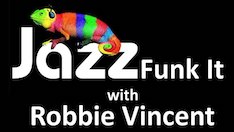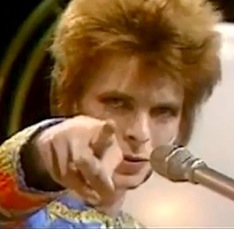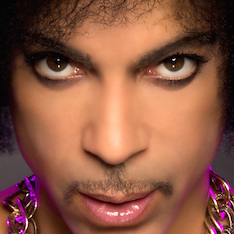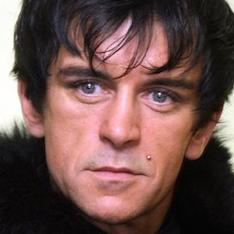➤ When John Lennon became US public enemy number one

This was Beatlemania in London, October 1965: policemen struggle to restrain young fans outside Buckingham Palace as The Beatles receive their MBEs (Member of the British Empire) from Queen Elizabeth II. Picture © Corbis
During the first week of April 1964, Britain’s loveable moptop pop group The Beatles occupied 12 places in the Billboard Hot 100, the US singles chart, including the top five, a feat which has never been bettered by any act since. Then, bang in the middle of the Swinging 60s, at the height of Beatlemania, the most successful pop group in history became possibly the most hated.
Radio stations in the American South and Midwest stopped playing Beatles records. Fans burnt the group’s records and mementoes on public bonfires. Death threats were reported. All because of a casual remark singer-songwriter John Lennon made to a British journalist who was a trusted friend. In the UK, it hadn’t raised a squeak. Trouble was, five months later, on the eve of an all-important 14-city US tour, an American magazine reproduced that dynamite remark. It was a red rag to the bible belt. What Lennon had said about the Beatles was: “We’re more popular than Jesus now” . . .

Christian outrage in 1966: public bonfires were organised in Alabama, Texas and Florida to burn The Beatles’ records
➢ HOT NEWS – June 23, 24, 2010: Christopher Eccleston stars as John Lennon in a new BBC4 drama, Lennon Naked, which charts his transition from Beatle John to enduring and enigmatic icon
➤ Part One: the interview
➤ How does a Beatle live?

First published in the London Evening Standard, March 4, 1966
 Maureen Cleave [left] was the author of this landmark piece of journalism. She was, and remains, a clear-sighted and persistent interviewer so the whole tour of Lennon’s home makes a riveting read.
Maureen Cleave [left] was the author of this landmark piece of journalism. She was, and remains, a clear-sighted and persistent interviewer so the whole tour of Lennon’s home makes a riveting read.
Today she says: “I first met John Lennon in 1963, put on to The Beatles by an Oxford friend who came from Liverpool, the journalist Gillian Reynolds (now The Daily Telegraph’s radio critic). They wore boots, she said, and their appearance inspired frenzy. ‘They look beat up and depraved in the nicest possible way.’
“I was writing a column in the London Evening Standard called – horrors! – Disc Date. But I had a fringe and red boots which was a good start. When the Beatles went to the US for The Ed Sullivan Show in 1964, I suggested to my editor I go, too. He was scathing. Take rock’n’roll to America? ‘Coals to Newcastle?’ But I went. Two days later I had a telegram from him: ‘Beatles posters stolen all over London.’ They soon became the most famous people in the English-speaking world.”
Maureen had enjoyed the trust of The Beatles ever since she had written the first significant mainstream piece about them, in the Standard on January 12 1963. Headlined “Why The Beatles create all that frenzy”, it acknowledged the Beatles as fresh young jokers in the Max Miller cheeky-chappie mould. As the Standard’s pop writer from 1960, Maureen guested occasionally on the BBC’s weekly pop panel show Juke Box Jury. Inevitably she had become close friends with the Fab Four who would occasionally lie low at her Maida Vale apartment to escape the pressures of Beatlemania.
By 1966, the frantic year of Paperback Writer, Yellow Submarine, the Revolver LP, and a world tour culminating in their third major visit to North America, none of The Beatles could set foot in the street without being mobbed. Maureen was uniqely well placed to ask John, Paul, George and Ringo for a substantial conversation one-to-one, to be published as a series of separate interviews – an ideal way to observe exactly how fugitive popstars lived . . .

Lennon on his garden perch at Kenwood: this was the 22-room house near Weybridge for which he paid £22,000. Between 1964 and 1968, it became his retreat from Beatlemania, where he often went days without speaking. Mind you, it was the place the other Beatles gathered to relax, along with visiting American musicians and nightclubbers that Lennon befriended in London

The house today: as the most expensive private estate in the country, St George’s Hill is now securely gated, being deep in the Surrey banker-cum-oligarch belt, surrounded by golf clubs. Nearby “ultra-high-net-worth” neighbours include British racing driver Lewis Hamilton and Russian oligarchs such as Alfa Bank’s Peter Aven and businessman Boris Berezovsky who owns a £10m house near Kenwood, though most Russians are said to prefer new builds in the neo-classical Palladian style. Kenwood was designed in 1913 by the architect Theophilus Allen in what we call Tudor Revival (tall brick chimneys, half-timbered gables) and was sold in January 2007 for £5.8m. Photograph © by Joe Baiardi
[From the London Evening Standard, March 4, 1966]
❚ IT WAS THIS TIME THREE YEARS AGO that The Beatles first grew famous. Ever since then, observers have anxiously tried to gauge whether their fame was on the wax or on the wane; they foretold the fall of the old Beatles, they searched diligently for the new Beatles (which was as pointless as looking for the new Big Ben).
At last they have given up. The Beatles’ fame is beyond question. It has nothing to do with whether they are rude or polite, married or unmarried, 25 or 45; whether they appear on Top of the Pops or do not appear on Top of the Pops. They are well above any position even a Rolling Stone might jostle for. They are famous in the way the Queen is famous. When John Lennon’s Rolls-Royce, with its black wheels and its black windows, goes past, people say “It’s the Queen” or “It’s The Beatles”. With her they share the security of a stable life at the top. They all tick over in the public esteem – she in Buckingham Palace, they in the Weybridge-Esher area. Only Paul remains in London.
The Weybridge community consists of the three married Beatles; they live there among the wooded hills and the stockbrokers. They have not worked since Christmas and their existence is secluded and curiously timeless. “What day is it?” John Lennon asks with interest when you ring up with news from outside. The fans are still at the gates but The Beatles see only each other. They are better friends than ever before.
Ringo and his wife, Maureen, may drop in on John and Cyn; John may drop in on Ringo; George and Pattie may drop in on John and Cyn and they might all go round to Ringo’s, by car of course. Outdoors is for holidays.
They watch films, they play rowdy games of Buccaneer; they watch television till it goes off, often playing records at the same time. They while away the small hours of the morning making mad tapes. Bedtimes and mealtimes have no meaning as such. “We’ve never had time before to do anything but just be Beatles,” John Lennon said.

Rich man’s toys: Lennon “inside” Sidney, the suit of armour in Kenwood’s entrance hall . . . and with Julian and the psychedelic Rolls-Royce Phantom V which was delivered in June 1965. That year, long before cell-phones, Lennon had a Sterno radio telephone fitted, and later converted the rear seat into a double bed. When the Rolls was bought at Sotheby’s in 1985 for US$2,299,000 by the Canadian entrepreneur Jim Pattison, it became the world’s most expensive car, and went for exhibition at his Ripley Entertainment’s Believe It Or Not museum in South Carolina
Lennon is much the same as he was before. He still peers down his nose, arrogant as an eagle, although contact lenses have righted the short sight that originally caused the expression. He looks more like Henry VIII than ever now that his face has filled out – he is just as imperious, just as unpredictable, indolent, disorganised, childish, vague, charming and quick-witted. He is still easy-going, still tough as hell. “You never asked after Fred Lennon,” he said, disappointed. (Fred is his father; he emerged after they got famous.) “He was here a few weeks ago. It was only the second time in my life I’d seen him – I showed him the door.” He went on cheerfully: “I wasn’t having him in the house.”
His enthusiasm is undiminished and he insists on its being shared. George has put him on to this Indian music. “You’re not listening, are you?” he shouts after 20 minutes of the record. “It’s amazing, this – so cool. Don’t the Indians appear cool to you? Are you listening? This music is thousands of years old; it makes me laugh, the British going over there and telling them what to do. Quite amazing.” And he switched on the television set.
Experience has sown few seeds of doubt in him: not that his mind is closed, but it’s closed round whatever he believes at the time. “Christianity will go,” he said. “It will vanish and shrink. I needn’t argue about that; I’m right and I will be proved right. We’re more popular than Jesus now; I don’t know which will go first – rock ’n’ roll or Christianity. Jesus was all right but his disciples were thick and ordinary. It’s them twisting it that ruins it for me.” He is reading extensively about religion.
❚ HE SHOPS IN LIGHTNING SWOOPS ON ASPREY’S these days and there is some fine wine in his cellar, but he is still quite unselfconscious. He is far too lazy to keep up appearances, even if he had worked out what the appearances should be – which he has not.

St George’s Hill estate, Surrey: in the Lennon era, fans were free to wander right up to Kenwood (circled) and though their attention annoyed him at first, by 1967 he accepted it and began leaving the gates open and inviting fans in to meet him. At that time, Lennon was close to Ringo Starr’s home, Sunny Heights, and not far from Kinfauns, George Harrison’s home in Esher
He is now 25. He lives in a large, heavily panelled, heavily carpeted, mock Tudor house set on a hill with his wife Cynthia and his son Julian. There is a cat called after his aunt Mimi, and a purple dining room. Julian is three; he may be sent to the Lycée in London. “Seems the only place for him in his position,” said his father, surveying him dispassionately. “I feel sorry for him, though. I couldn’t stand ugly people even when I was five. Lots of the ugly ones are foreign, aren’t they?”
We did a speedy tour of the house, Julian panting along behind, clutching a large porcelain Siamese cat. John swept past the objects in which he had lost interest: “That’s Sidney” (a suit of armour); “That’s a hobby I had for a week” (a room full of model racing cars); “Cyn won’t let me get rid of that” (a fruit machine). In the sitting room are eight little green boxes with winking red lights; he bought them as Christmas presents but never got round to giving them away. They wink for a year; one imagines him sitting there till next Christmas, surrounded by the little winking boxes.
He paused over objects he still fancies; a huge altar crucifix of a Roman Catholic nature with IHS on it; a pair of crutches, a present from George; an enormous Bible he bought in Chester; his gorilla suit.
“I thought I might need a gorilla suit,” he said; he seemed sad about it. “I’ve only worn it twice. I thought I might pop it on in the summer and drive round in the Ferrari. We were all going to get them and drive round in them but I was the only one who did. I’ve been thinking about it and if I didn’t wear the head it would make an amazing fur coat – with legs, you see. I would like a fur coat but I’ve never run into any.”
One feels that his possessions – to which he adds daily – have got the upper hand; all the tape recorders, the five television sets, the cars, the telephones of which he knows not a single number. The moment he approaches a switch it fuses; six of the winking boxes, guaranteed to last till next Christmas, have gone funny already. His cars – the Rolls, the Mini-Cooper (black wheels, black windows), the Ferrari (being painted black) – puzzle him. Then there’s the swimming pool, the trees sloping away beneath it. “Nothing like what I ordered,” he said resignedly. He wanted the bottom to be a mirror. “It’s an amazing household,” he said. “None of my gadgets really work except the gorilla suit – that’s the only suit that fits me.”

Kenwood 1965: John in the garden with his first wife Cynthia. She described him then as a daydreamer, “present but absent”. When working he could be non-communicative, but he made her a £50-a-week allowance to go shopping. They divorced after six years of marriage and today Cyn lives in Spain
He is very keen on books, will always ask what is good to read. He buys quantities of books and these are kept tidily in a special room. He has Swift, Tennyson, Huxley, Orwell, costly leather-bound editions of Tolstoy, Oscar Wilde. Then there’s Little Women, all the William books from his childhood; and some unexpected volumes such as Forty-One Years In India, by Field Marshal Lord Roberts, and Curiosities of Natural History, by Francis T Buckland. This last – with its chapter headings “Ear-less Cats”, “Wooden-Legged People,” “The Immortal Harvey’s Mother” – is right up his street.
He approaches reading with a lively interest untempered by too much formal education. “I’ve read millions of books,” he said, “that’s why I seem to know things.” He is obsessed by Celts. “I have decided I am a Celt,” he said. “I am on Boadicea’s side – all those bloody blue-eyed blondes chopping people up. I have an awful feeling wishing I was there – not there with scabs and sores but there through reading about it. The books don’t give you more than a paragraph about how they lived; I have to imagine that.”
He can sleep almost indefinitely, is probably the laziest person in England. “Physically lazy,” he said. “I don’t mind writing or reading or watching or speaking, but sex is the only physical thing I can be bothered with any more.” Occasionally he is driven to London in the Rolls by an ex-Welsh guardsman called Anthony; Anthony has a moustache that intrigues him.
The day I visited him he had been invited to lunch in London, about which he was rather excited. “Do you know how long lunch lasts?” he asked. “I’ve never been to lunch before. I went to a Lyons the other day and had egg and chips and a cup of tea. The waiters kept looking and saying: ‘No, it isn’t him, it can’t be him’.”
He settled himself into the car and demonstrated the television, the folding bed, the refrigerator, the writing desk, the telephone. He has spent many fruitless hours on that telephone. “I only once got through to a person,” he said, “and they were out.”
Anthony had spent the weekend in Wales. John asked if they’d kept a welcome for him in the hillside and Anthony said they had. They discussed the possibility of an extension for the telephone. We had to call at the doctor’s because John had a bit of sea urchin in his toe. “Don’t want to be like Dorothy Dandridge,” he said, “dying of a splinter 50 years later.” He added reassuringly that he had washed the foot in question.
❚ WE BOWLED ALONG IN A COSTLY FASHION through the countryside. “Famous and loaded” is how he describes himself now. “They keep telling me I’m all right for money but then I think I may have spent it all by the time I’m 40 so I keep going. That’s why I started selling my cars; then I changed my mind and got them all back and a new one too.
“I want the money just to be rich. The only other way of getting it is to be born rich. If you have money, that’s power without having to be powerful. I often think that it’s all a big conspiracy, that the winners are the government and people like us who’ve got the money. That joke about keeping the workers ignorant is still true; that’s what they said about the Tories and the landowners and that; then Labour were meant to educate the workers but they don’t seem to be doing that any more.”

Father and son Julian, his only child with Cynthia: John clearly dotes on Julian who was one when the family moved into Kenwood
He has a morbid horror of stupid people: “Famous and loaded as I am, I still have to meet soft people. It often comes into my mind that I’m not really rich. There are really rich people but I don’t know where they are.”
He finds being famous quite easy, confirming one’s suspicion that The Beatles had been leading up to this all their lives. “Everybody thinks they would have been famous if only they’d had the Latin and that. So when it happens it comes naturally. You remember your old granny saying soft things like: ‘You’ll make it with that voice’.” Not, he added, that he had any old grannies.
He got to the doctor two-and-three-quarter hours early and to lunch on time but in the wrong place. He bought a giant compendium of games from Asprey’s but having opened it he could not, of course, shut it again. He wondered what else he should buy. He went to Brian Epstein’s office. “Any presents?” he asked eagerly; he observed that there was nothing like getting things free. He tried on the attractive Miss Hanson’s spectacles.
The rumour came through that a Beatle had been sighted walking down Oxford Street! He brightened. “One of the others must be out,” he said, as though speaking of an escaped bear. “We only let them out one at a time,” said the attractive Miss Hanson firmly.
He said that to live and have a laugh were the things to do; but was that enough for the restless spirit?
“Weybridge,” he said, “won’t do at all. I’m just stopping at it, like a bus stop. Bankers and stockbrokers live there; they can add figures and Weybridge is what they live in and they think it’s the end, they really do. I think of it every day – me in my Hansel and Gretel house. I’ll take my time; I’ll get my real house when I know what I want.
“You see, there’s something else I’m going to do, something I must do – only I don’t know what it is. That’s why I go round painting and taping and drawing and writing and that, because it may be one of them. All I know is, this isn’t it for me.”
Anthony got him and the compendium into the car and drove him home with the television flickering in the soothing darkness while the Londoners outside rushed home from work.
Text © 1966 Maureen Cleave
During 2009 Cynthia Lennon told a TV programme:
“The house was at the top of the hill, and John was thrilled to bits that it was at the top of a hill so we would have a little bit of protection, because at that point the fans were going mad & camping out etc etc. Actually we lived in the top flat – the servants’ quarters, as it were, for one year virtually when we moved in while the rest of the place was being totally gutted & changed & redesigned & everything else. We couldn’t believe it – we’d sit and look at everything: I mean, it was dead posh, in our terms. Once the builders had gone, and the great gates had been put up, the electric gates, then we had some peace & tranquillity.
“I know that [in 1966 John] was feeling trapped after the Jesus Christ comments, & he needed to find space in his own mind & imagination. After having LSD put in our coffee when we went out for dinner, John tried it & found it fascinating, so he started taking it virtually daily. It’s like living with an alcoholic – when they’re sober they’re great, but when they’re drunk it’s very hard to communicate with them.”
➢➢ Quoted from Kenwoodlennon’s exhaustive blog devoted to the Beatle’s house. Shapersofthe80s is very happy to acknowledge its vast collection of Lennon family pictures and commentaries which inform the images accompanying Maureen’s feature article here
➢ VIEW John Lennon at Kenwood: then and now. The Kenwood blogger has edited bits of Joe Baiardi’s 2008 cine-footage together with photos of John taken in roughly the same spots . . .
☆ ☆ ☆
➤ Part Two: the fallout

Alabama in 1966: public bonfires for Beatles records
A furore known as The Jesus Controversy occurred in August 1966 after John Lennon’s observation that The Beatles had become “more popular than Jesus” was quoted by American teen magazine Datebook.
Commenting on the uproar over the article in America, Maureen Cleave in London said, “John was certainly not comparing The Beatles with Christ. He was simply observing that so weak was the state of Christianity that The Beatles were, to many people, better known. He was deploring, rather than approving, this.”
And at a press conference in New York, to try to head off the growing controversy, Brian Epstein told reporters, “The quote which John Lennon made to a London columnist has been quoted and misrepresented entirely out of context of the article, which was in fact highly complimentary to Lennon as a person.”
In Canada, The Beatles had one other ally, the Bishop of Montreal, the Rt Rev Kenneth Maguire. He said “I wouldn’t be surprised if The Beatles actually were more popular than Jesus. In the only popularity poll in Jesus’s time He came out second best to Barabbas.”










